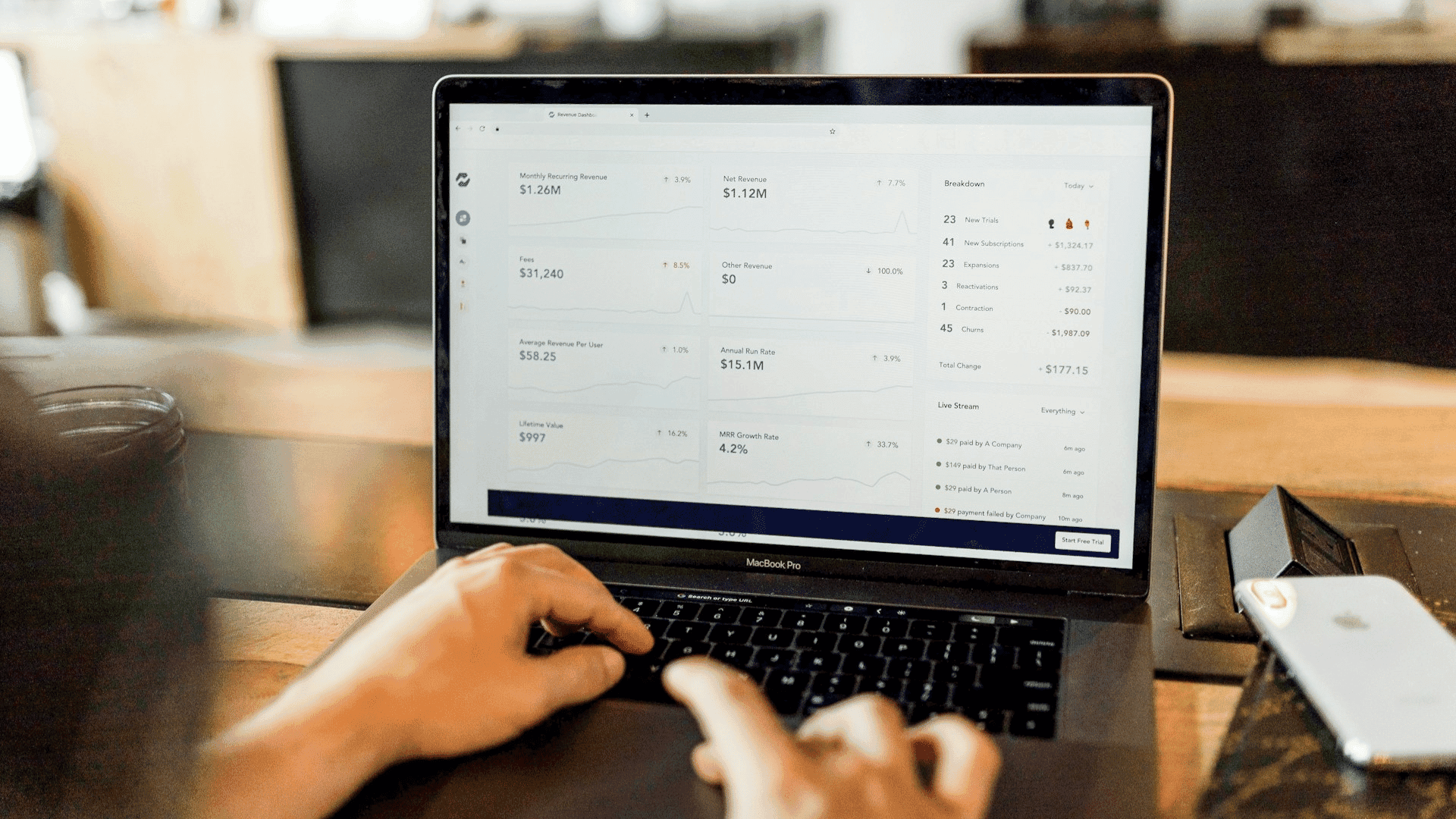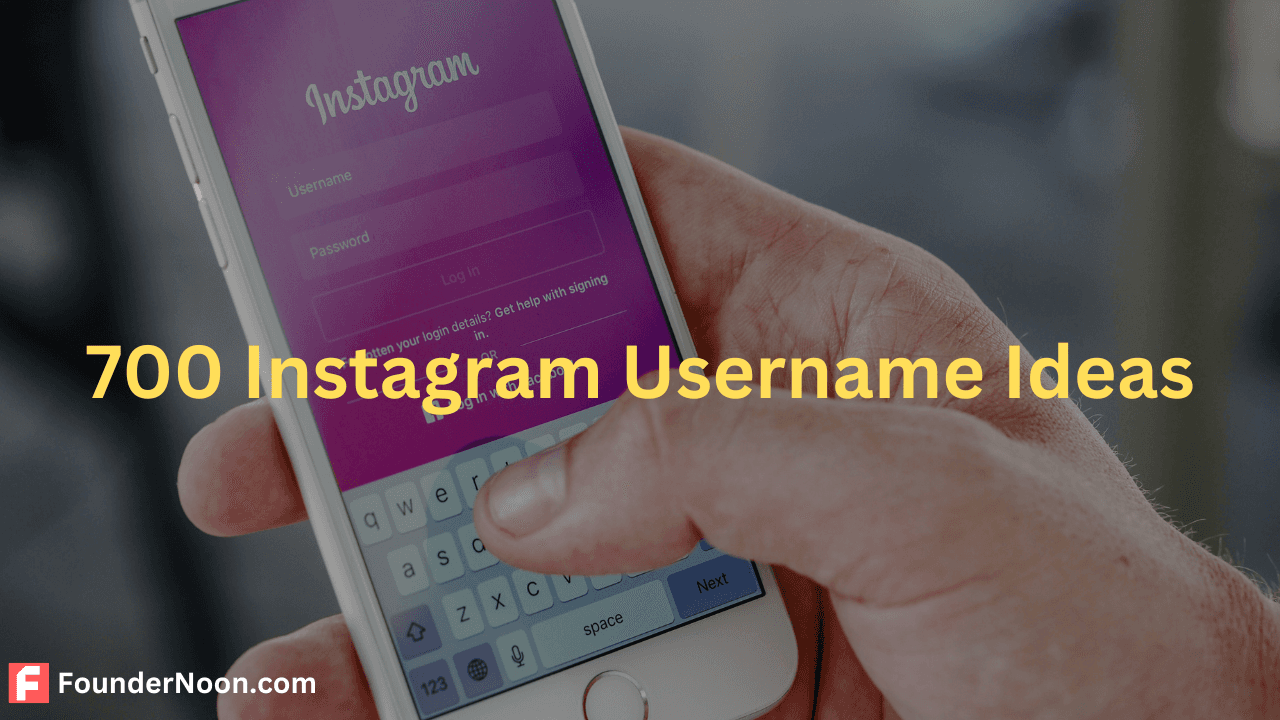B2B SaaS Go-to-Market Checklist for Bootstrapped Founders
B2B SaaS Go-to-Market Checklist for Bootstrapped Founders



Introduction
Introduction
Starting a bootstrapped SaaS business? You’re in good company. Bootstrapping may be a more challenging path, but with the right go-to-market (GTM) strategy, you can get your product in front of your target audience, drive conversions, and grow sustainably without draining your bank account.
This guide is your B2B SaaS GTM checklist—created to make sure you’re equipped for launch, prepared for growth, and ready to win over customers. Let’s dive in.
Starting a bootstrapped SaaS business? You’re in good company. Bootstrapping may be a more challenging path, but with the right go-to-market (GTM) strategy, you can get your product in front of your target audience, drive conversions, and grow sustainably without draining your bank account.
This guide is your B2B SaaS GTM checklist—created to make sure you’re equipped for launch, prepared for growth, and ready to win over customers. Let’s dive in.
Contents
Boost your business visibility to thousands of engaged readers!
Get Featured on 100+ pages across the FounderNoon website.
One month stretch ⇢ $100
Three-month stretch ⇢ $250
Boost your business visibility to thousands of engaged readers!
Get Featured on 100+ pages across the FounderNoon website.
One month stretch ⇢ $100
Three-month stretch ⇢ $250
Contents
1. Identifying Your Target Audience
1. Identifying Your Target Audience

A SaaS product without a clear audience is like a ship without a map. Before you even think about marketing, get crystal clear on who you’re building for. The key to a successful go-to-market strategy lies in understanding your market, target audience, and competitive advantage.
Market Research
Market research isn’t just a fancy term—it’s a vital step. To stand out, you need to understand the landscape you’re entering. Research what’s already out there, identify your main competitors, and pinpoint gaps in the market that your SaaS can fill.
Who are your competitors? Look at both direct and indirect competitors. How do they position themselves? What’s working for them, and where are they lacking?
What’s the gap? Focus on gaps or areas where existing solutions fall short. Think about how you can fill those with your product.
Define Your Target Audience
Now, it’s time to nail down your ideal customers. Who will benefit most from your SaaS?
Customer Demographics: Start with the basics—company size, industry, job titles, and roles of those who will benefit.
Pain Points: What specific problems are they facing that your SaaS product can solve? Are they looking to save time, reduce costs, or improve efficiency?
Customer Needs: Think beyond your product. What additional needs does your target audience have? Can you deliver on these for added value?
Find Your Competitive Advantage
Once you know your audience and competitors, focus on what makes you unique.
Unique Selling Point (USP): Define what makes your SaaS different or better than competitors. Is it easier to use? More affordable? Uniquely suited to a niche market?
Communicate Your Advantage: Make sure your marketing copy clearly communicates this. In a crowded SaaS market, a clear competitive advantage can be the difference between landing a customer or losing one.

A SaaS product without a clear audience is like a ship without a map. Before you even think about marketing, get crystal clear on who you’re building for. The key to a successful go-to-market strategy lies in understanding your market, target audience, and competitive advantage.
Market Research
Market research isn’t just a fancy term—it’s a vital step. To stand out, you need to understand the landscape you’re entering. Research what’s already out there, identify your main competitors, and pinpoint gaps in the market that your SaaS can fill.
Who are your competitors? Look at both direct and indirect competitors. How do they position themselves? What’s working for them, and where are they lacking?
What’s the gap? Focus on gaps or areas where existing solutions fall short. Think about how you can fill those with your product.
Define Your Target Audience
Now, it’s time to nail down your ideal customers. Who will benefit most from your SaaS?
Customer Demographics: Start with the basics—company size, industry, job titles, and roles of those who will benefit.
Pain Points: What specific problems are they facing that your SaaS product can solve? Are they looking to save time, reduce costs, or improve efficiency?
Customer Needs: Think beyond your product. What additional needs does your target audience have? Can you deliver on these for added value?
Find Your Competitive Advantage
Once you know your audience and competitors, focus on what makes you unique.
Unique Selling Point (USP): Define what makes your SaaS different or better than competitors. Is it easier to use? More affordable? Uniquely suited to a niche market?
Communicate Your Advantage: Make sure your marketing copy clearly communicates this. In a crowded SaaS market, a clear competitive advantage can be the difference between landing a customer or losing one.
2. Developing a Clear Value Proposition
2. Developing a Clear Value Proposition

Now that you’ve identified your audience, let’s talk about why they should care about your product.
Craft a Strong Value Proposition
A solid value proposition is a promise. It tells potential customers exactly what they’ll get from your product and how it’s going to make their lives easier.
Make It Clear: Avoid jargon. Your value proposition should be simple enough that anyone can understand it in a few seconds.
Highlight the Benefits: Don’t just list features. Focus on the core benefits that will resonate with your target audience.
Align Your Product Development with Customer Needs
Your value proposition should directly reflect the actual benefits of your product. Build features that address real needs, not just what you think is cool.
Customer Feedback: Get feedback early and often. Beta test, survey, and run demos with real users.
Iterate Fast: Use feedback to improve. Iteration is critical for bootstrapped SaaS businesses—each update should bring you closer to product-market fit.

Now that you’ve identified your audience, let’s talk about why they should care about your product.
Craft a Strong Value Proposition
A solid value proposition is a promise. It tells potential customers exactly what they’ll get from your product and how it’s going to make their lives easier.
Make It Clear: Avoid jargon. Your value proposition should be simple enough that anyone can understand it in a few seconds.
Highlight the Benefits: Don’t just list features. Focus on the core benefits that will resonate with your target audience.
Align Your Product Development with Customer Needs
Your value proposition should directly reflect the actual benefits of your product. Build features that address real needs, not just what you think is cool.
Customer Feedback: Get feedback early and often. Beta test, survey, and run demos with real users.
Iterate Fast: Use feedback to improve. Iteration is critical for bootstrapped SaaS businesses—each update should bring you closer to product-market fit.
3. Building a Customer-Centric Marketing Plan
3. Building a Customer-Centric Marketing Plan

Your marketing plan is the roadmap that will take your product from development to paying customers. Here’s how to make sure you’re on the right track.
Start Small, Focused, and Strategic
For bootstrapped founders, it’s all about working smarter, not harder. Your marketing plan doesn’t need to be complex—it needs to be lean, customer-focused, and easy to execute.
Identify Key Channels: Start by identifying 1-2 channels where your target audience spends time. Are they on LinkedIn, Twitter, or forums?
Content Marketing: Develop content that solves your audience’s pain points. Blog posts, guides, and white papers are effective for building trust.
Use Social Media Wisely
Social media can be a powerful tool for spreading the word about your SaaS without a big budget. Use platforms where your audience is active, and focus on providing value.
LinkedIn: Great for B2B. Share useful tips, post insights, and connect with potential customers.
Twitter: Ideal for quick, insightful content. Share updates, industry news, and engage with relevant hashtags.
Email Marketing
Even with all the modern tools out there, email is still a powerful, low-cost way to nurture leads. Build an email list early and keep your subscribers engaged.
Email Drip Campaigns: Set up an automated sequence that introduces your product, builds trust, and provides valuable content.
Product Updates & Webinars: Send updates to existing subscribers about new features and improvements. Offer webinars to showcase how to get the most out of your product.

Your marketing plan is the roadmap that will take your product from development to paying customers. Here’s how to make sure you’re on the right track.
Start Small, Focused, and Strategic
For bootstrapped founders, it’s all about working smarter, not harder. Your marketing plan doesn’t need to be complex—it needs to be lean, customer-focused, and easy to execute.
Identify Key Channels: Start by identifying 1-2 channels where your target audience spends time. Are they on LinkedIn, Twitter, or forums?
Content Marketing: Develop content that solves your audience’s pain points. Blog posts, guides, and white papers are effective for building trust.
Use Social Media Wisely
Social media can be a powerful tool for spreading the word about your SaaS without a big budget. Use platforms where your audience is active, and focus on providing value.
LinkedIn: Great for B2B. Share useful tips, post insights, and connect with potential customers.
Twitter: Ideal for quick, insightful content. Share updates, industry news, and engage with relevant hashtags.
Email Marketing
Even with all the modern tools out there, email is still a powerful, low-cost way to nurture leads. Build an email list early and keep your subscribers engaged.
Email Drip Campaigns: Set up an automated sequence that introduces your product, builds trust, and provides valuable content.
Product Updates & Webinars: Send updates to existing subscribers about new features and improvements. Offer webinars to showcase how to get the most out of your product.
4. Setting Up Your Sales Strategy
4. Setting Up Your Sales Strategy

You don’t need a big sales team to close deals, but you do need a structured approach to sales.
Define Your Sales Strategy
Set up a basic sales process that’s easy to follow and repeat. Keep it simple and trackable.
Inbound or Outbound? Decide if you’re focusing on inbound (content, referrals) or outbound (cold emailing, networking). For bootstrapped founders, inbound is often more sustainable.
Lead Scoring: Identify and prioritize the most promising leads based on their engagement and fit with your ICP.
Handling Sales Yourself
As a bootstrapped founder, you might be handling sales on your own, at least in the early stages.
Keep it Personal: One advantage of being a small operation is the ability to give a personal touch. Build relationships with early customers.
Learn & Adapt: Track your conversion rates and analyze what’s working. Adjust your approach as you go.
Improving Conversion Rate
Your conversion rate is key. Even a slight improvement here can have a huge impact on your growth.
A/B Testing: Try different messages, demo formats, or call-to-action placements to see what resonates.
Follow-Up Strategy: A simple follow-up can often close a sale that might otherwise be lost.

You don’t need a big sales team to close deals, but you do need a structured approach to sales.
Define Your Sales Strategy
Set up a basic sales process that’s easy to follow and repeat. Keep it simple and trackable.
Inbound or Outbound? Decide if you’re focusing on inbound (content, referrals) or outbound (cold emailing, networking). For bootstrapped founders, inbound is often more sustainable.
Lead Scoring: Identify and prioritize the most promising leads based on their engagement and fit with your ICP.
Handling Sales Yourself
As a bootstrapped founder, you might be handling sales on your own, at least in the early stages.
Keep it Personal: One advantage of being a small operation is the ability to give a personal touch. Build relationships with early customers.
Learn & Adapt: Track your conversion rates and analyze what’s working. Adjust your approach as you go.
Improving Conversion Rate
Your conversion rate is key. Even a slight improvement here can have a huge impact on your growth.
A/B Testing: Try different messages, demo formats, or call-to-action placements to see what resonates.
Follow-Up Strategy: A simple follow-up can often close a sale that might otherwise be lost.

















2,678+ people enjoy it
➤ Every week, we dig up stories of how regular people started and grew their businesses—
➤ Plus the marketing hacks that won them customers.
➤ Then, we share those insights with you.
➤ Every week, we dig up stories of how regular people started and grew their businesses—
➤ Plus the marketing hacks that won them customers.
➤ Then, we share those insights with you.
5. Defining Your SaaS GTM Strategy
5. Defining Your SaaS GTM Strategy

Your GTM strategy is the big picture—it combines marketing, sales, and customer success into one cohesive plan.
Customer Success as Part of GTM
For a bootstrapped SaaS, customer success isn’t just about retaining customers—it’s about making sure they become advocates.
Onboarding Process: A good onboarding experience makes a great first impression. Walk users through your product, provide resources, and be available for questions.
Customer Success Team: Even if it’s just you at the start, focus on supporting customers so they stick around and spread the word.
Pricing Strategy
Pricing can make or break your SaaS launch. Choose a pricing strategy that aligns with both your target market and your financial goals.
Freemium or Paid? Offering a free trial or freemium model can lower barriers to entry, especially if you’re new to the market.
Value-Based Pricing: Price based on the value you provide to the customer rather than just the features included. This can help you maximize revenue without needing to cut costs.
Building a Sustainable GTM
A successful GTM strategy isn’t a one-time effort—it’s about building a framework that supports long-term growth.
Plan for Long-Term: Think beyond the launch. How will you adapt your GTM as you grow? How will you evolve your pricing, customer success, and sales strategy?

Your GTM strategy is the big picture—it combines marketing, sales, and customer success into one cohesive plan.
Customer Success as Part of GTM
For a bootstrapped SaaS, customer success isn’t just about retaining customers—it’s about making sure they become advocates.
Onboarding Process: A good onboarding experience makes a great first impression. Walk users through your product, provide resources, and be available for questions.
Customer Success Team: Even if it’s just you at the start, focus on supporting customers so they stick around and spread the word.
Pricing Strategy
Pricing can make or break your SaaS launch. Choose a pricing strategy that aligns with both your target market and your financial goals.
Freemium or Paid? Offering a free trial or freemium model can lower barriers to entry, especially if you’re new to the market.
Value-Based Pricing: Price based on the value you provide to the customer rather than just the features included. This can help you maximize revenue without needing to cut costs.
Building a Sustainable GTM
A successful GTM strategy isn’t a one-time effort—it’s about building a framework that supports long-term growth.
Plan for Long-Term: Think beyond the launch. How will you adapt your GTM as you grow? How will you evolve your pricing, customer success, and sales strategy?
6. Implementing a Feedback Loop for Continuous Improvement
6. Implementing a Feedback Loop for Continuous Improvement
No GTM strategy is set in stone. The SaaS industry moves fast, so you’ll need a continuous feedback loop to stay relevant.
Gather Customer Feedback
Customer feedback is your lifeline. It shows what’s working, what’s not, and where to improve.
Surveys & User Interviews: Ask your customers what they like, dislike, and want to see in the future.
Data-Driven Decisions: Use data from user behavior to guide updates, especially when planning new features or refining your product.
Use Feedback to Improve
Once you have feedback, put it to use.
Iterate Based on Feedback: Update your product regularly, and show customers you’re listening to their needs.
Customer Success Check-Ins: Regularly check in with customers to see how they’re using the product and identify areas for improvement.
No GTM strategy is set in stone. The SaaS industry moves fast, so you’ll need a continuous feedback loop to stay relevant.
Gather Customer Feedback
Customer feedback is your lifeline. It shows what’s working, what’s not, and where to improve.
Surveys & User Interviews: Ask your customers what they like, dislike, and want to see in the future.
Data-Driven Decisions: Use data from user behavior to guide updates, especially when planning new features or refining your product.
Use Feedback to Improve
Once you have feedback, put it to use.
Iterate Based on Feedback: Update your product regularly, and show customers you’re listening to their needs.
Customer Success Check-Ins: Regularly check in with customers to see how they’re using the product and identify areas for improvement.
7. Assembling a Lean Marketing and Sales Team
7. Assembling a Lean Marketing and Sales Team
As your SaaS grows, you’ll likely need to add team members to help manage the workload. But for bootstrapped founders, it’s crucial to keep the team lean and efficient.
When to Add Marketing Roles
Once your initial marketing efforts are yielding results, consider bringing in help to scale.
Content Creators: A freelance writer or content marketer can boost your content marketing efforts without needing a full-time hire.
Social Media Manager: As your brand presence grows, having someone manage social channels can free up time for other tasks.
Sales Team for Scale
At some point, you’ll need a dedicated sales rep or team to help close deals more efficiently.
Sales Process: Create a repeatable sales process that new team members can easily follow.
Sales Tools: Use CRM software to keep track of leads and streamline communication.
As your SaaS grows, you’ll likely need to add team members to help manage the workload. But for bootstrapped founders, it’s crucial to keep the team lean and efficient.
When to Add Marketing Roles
Once your initial marketing efforts are yielding results, consider bringing in help to scale.
Content Creators: A freelance writer or content marketer can boost your content marketing efforts without needing a full-time hire.
Social Media Manager: As your brand presence grows, having someone manage social channels can free up time for other tasks.
Sales Team for Scale
At some point, you’ll need a dedicated sales rep or team to help close deals more efficiently.
Sales Process: Create a repeatable sales process that new team members can easily follow.
Sales Tools: Use CRM software to keep track of leads and streamline communication.
8. Measuring Success and Refining Your Strategy
8. Measuring Success and Refining Your Strategy
Setting KPIs and tracking progress is essential to understand what’s working and what needs to change.
Key Metrics to Watch
Tracking metrics like conversion rate, customer acquisition cost (CAC), and customer lifetime value (CLV) will help you measure your progress and identify areas to improve.
Conversion Rates: Measure conversion rates from various touchpoints, including your website, landing pages, and email campaigns.
Retention & Churn Rates: High retention and low churn are signs of a product that meets customer needs.
Refining Your Strategy
Keep refining based on performance data and customer insights.
Iterate & Improve: Make data-backed decisions to improve your marketing, sales, and customer success strategies.
Stay Agile: In SaaS, agility is everything. Be ready to pivot and adapt to changes in the market or customer needs.
Setting KPIs and tracking progress is essential to understand what’s working and what needs to change.
Key Metrics to Watch
Tracking metrics like conversion rate, customer acquisition cost (CAC), and customer lifetime value (CLV) will help you measure your progress and identify areas to improve.
Conversion Rates: Measure conversion rates from various touchpoints, including your website, landing pages, and email campaigns.
Retention & Churn Rates: High retention and low churn are signs of a product that meets customer needs.
Refining Your Strategy
Keep refining based on performance data and customer insights.
Iterate & Improve: Make data-backed decisions to improve your marketing, sales, and customer success strategies.
Stay Agile: In SaaS, agility is everything. Be ready to pivot and adapt to changes in the market or customer needs.
Conclusion
Conclusion
Launching a B2B SaaS as a bootstrapped founder isn’t easy, but with this go-to-market checklist, you’ll be ready to take on the challenge. Focus on understanding your audience, building a clear value proposition, crafting a lean but effective marketing and sales strategy, and iterating based on customer feedback.
Remember, every successful SaaS business started small. With a clear plan and dedication, your SaaS can be the next big thing.
Do me a favor and pass this on to a pal or share? It'll take just 20 seconds—this one took me about 5 hours to research and write 🫠
P.S. I’ve got a weekly newsletter where I share stories about founders who have started successful online businesses, growth strategies, and tips to start/grow your own business. I would love for you to join here
Read about how this saas company makes $40k/month with a Release Notes Tool here
Launching a B2B SaaS as a bootstrapped founder isn’t easy, but with this go-to-market checklist, you’ll be ready to take on the challenge. Focus on understanding your audience, building a clear value proposition, crafting a lean but effective marketing and sales strategy, and iterating based on customer feedback.
Remember, every successful SaaS business started small. With a clear plan and dedication, your SaaS can be the next big thing.
Do me a favor and pass this on to a pal or share? It'll take just 20 seconds—this one took me about 5 hours to research and write 🫠
P.S. I’ve got a weekly newsletter where I share stories about founders who have started successful online businesses, growth strategies, and tips to start/grow your own business. I would love for you to join here
Read about how this saas company makes $40k/month with a Release Notes Tool here






